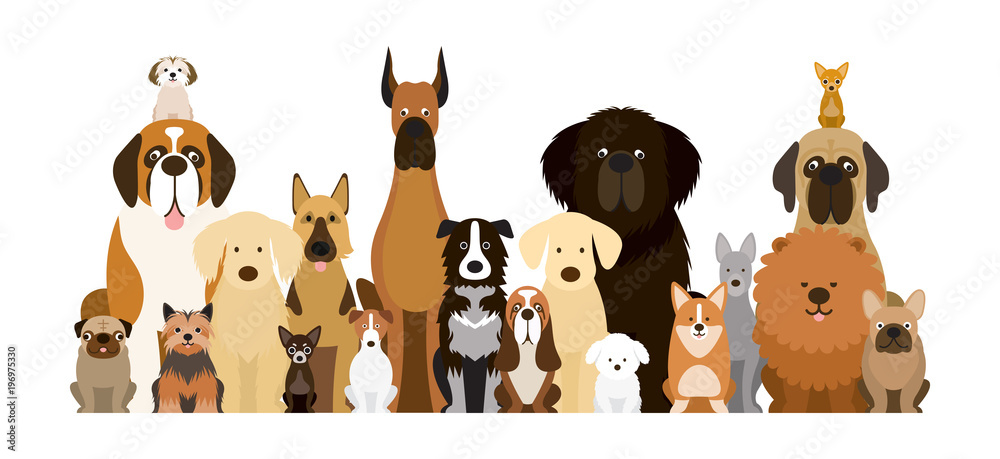Caring for dogs of different breeds is a rewarding but sometimes challenging experience. Each breed comes with its own set of characteristics, needs, and behaviors. Whether you’re a pet parent with a multi-breed household or a dog lover who wants to understand various canine personalities, knowing how to adapt your care routine to meet diverse needs is essential. Here’s a comprehensive guide with practical tips for dog owners around the world who care for pups of many kinds.
Understand the Unique Needs of Each Breed
Different breeds have different genetic backgrounds and instincts. For example:
- Herding breeds like Border Collies and Australian Shepherds need plenty of mental stimulation and exercise.
- Toy breeds such as Chihuahuas and Pomeranians are small but can be feisty and may need gentle handling.
- Working breeds like Huskies or Rottweilers often need structured routines and tasks to stay balanced.
- Hound breeds, like Beagles and Basset Hounds, may have strong scent-driven behaviors and require patience during walks.
Understanding these tendencies helps you tailor your training, exercise, and grooming routines accordingly.
Balanced Diets Tailored to Each Dog
Feeding dogs of different breeds doesn’t mean giving them the same food. Consider:
- Size and weight: Large breeds often benefit from diets that support joint health, while small breeds need more calorie-dense food.
- Age: Puppies, adults, and senior dogs all have unique nutritional needs.
- Allergies and sensitivities: Some breeds are more prone to skin or food allergies (e.g., Bulldogs, Retrievers).
- Energy levels: Active dogs may need a higher-protein diet, while more sedentary dogs require controlled calorie intake to avoid obesity.
Always consult a veterinarian for customized dietary advice, especially if you’re managing multiple dogs.
Regular Exercise — Breed-Specific Approaches
Every dog needs exercise, but the intensity and type can vary:
- High-energy breeds (e.g., Dalmatians, Huskies) require daily, vigorous activities like running or agility training.
- Moderate-energy dogs (e.g., Labradors, Boxers) enjoy structured walks, fetch, or swim time.
- Low-energy breeds (e.g., Bulldogs, Shih Tzus) are happy with shorter walks and indoor play.
When managing multiple dogs, you may need to split walks or create variety in your daily routine to keep each dog physically and mentally fulfilled.
Grooming: Don’t Use a One-Size-Fits-All Approach
Grooming needs differ greatly depending on breed:
- Double-coated dogs like Golden Retrievers or Akitas need regular brushing to avoid matting and excess shedding.
- Short-haired breeds require less maintenance but still benefit from occasional baths and nail trimming.
- Curly or wiry-coated breeds, such as Poodles or Schnauzers, often require professional grooming.
- Pay special attention to ear cleaning, dental hygiene, and paw care, especially for breeds with floppy ears or small mouths.
Investing in the right grooming tools can save time and reduce stress for both you and your dogs.
Training: Use Adaptive Techniques
Training dogs of different breeds means recognizing what motivates them. Some dogs are food-driven, while others respond better to toys or praise. Breeds like German Shepherds may be quick learners, while stubborn breeds like Dachshunds may require more patience.
Use consistent commands and positive reinforcement, and avoid harsh corrections. Tailoring your training methods helps create better communication and trust between you and each dog.
Health Monitoring for All Types
Certain breeds are predisposed to specific health conditions:
- Brachycephalic breeds (e.g., Pugs, French Bulldogs) may struggle with breathing and heat regulation.
- Large breeds may be prone to hip dysplasia or bloat.
- Small breeds might develop dental issues earlier in life.
Regular check-ups, vaccinations, parasite control, and dental care are critical, especially when managing several breeds. Keeping individual health records organized is a great practice.
Socialization Strategies
Dogs of different breeds may have varying social behaviors. Some are naturally friendly, while others are more territorial or shy. Proper socialization from a young age can prevent behavioral issues.
- Introduce new people, animals, and environments gradually.
- Use positive reinforcement during interactions.
- Respect individual comfort levels—some breeds are more aloof or independent.
When managing a household with multiple breeds, monitor interactions and provide space for each dog to retreat if needed.
Respect Individual Temperaments
Breed can influence personality, but each dog is still unique. Get to know your dogs on a personal level:
- What are their triggers?
- What activities do they enjoy most?
- How do they react to strangers, other pets, or noises?
Building a strong relationship with each dog individually creates a peaceful, more manageable group dynamic.
Safe, Comfortable Living Spaces
When you have dogs of various sizes and personalities, make sure your home accommodates everyone:
- Provide separate beds or resting areas to avoid resource guarding.
- Use baby gates or crates if needed to manage excitement or rest time.
- Ensure toys, water bowls, and feeding stations are appropriate for all sizes.
Safety and comfort should be priorities, especially if you have older dogs living with energetic young ones.
Embrace the Joy of Diversity
Caring for multiple dog breeds brings variety, learning, and deep fulfillment. You’ll grow in your understanding of canine behavior and communication, and your dogs will benefit from a caregiver who adapts and cares for each of them as individuals.
Diversity in breeds also creates great opportunities to educate others—whether you’re blogging, posting on social media, or simply sharing tips with neighbors.
One Pack and Many Personalities
Raising and caring for dogs of different breeds may require a bit more effort, but the rewards are unmatched. With patience, awareness, and love, you can create a balanced home where every tail wags with happiness.
